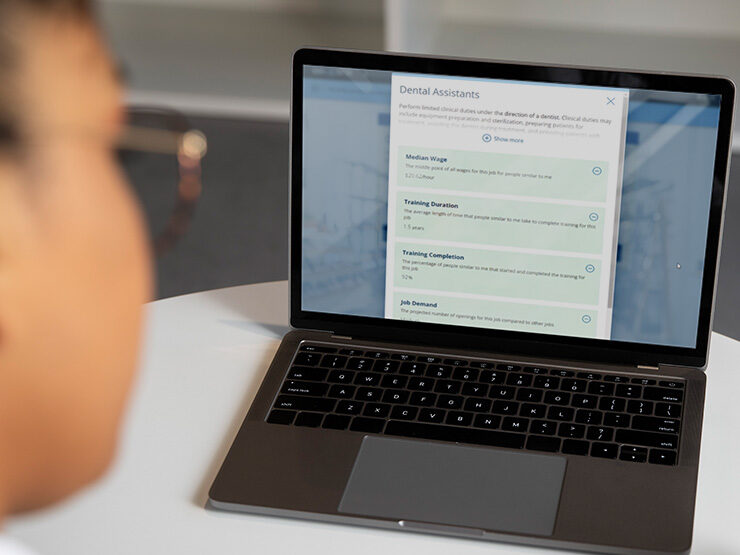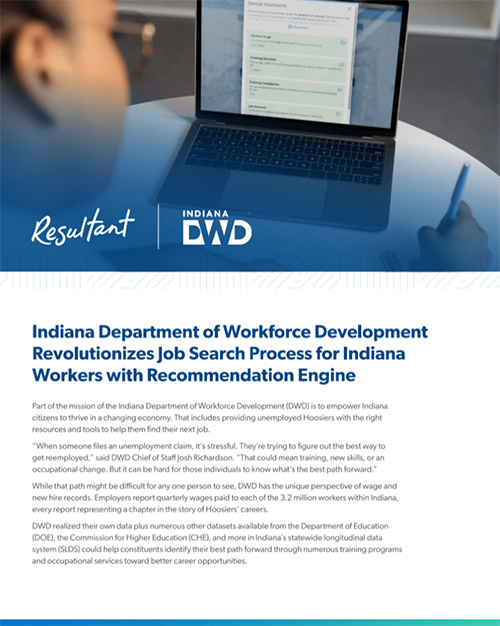Indiana Department of Workforce Development Revolutionizes Job Search Process for Indiana Workers with Recommendation Engine
Share
“When someone files an unemployment claim, it’s stressful. They’re trying to figure out the best way to get reemployed,” said DWD Chief of Staff Josh Richardson. “That could mean training, new skills, or an occupational change. But it can be hard for those individuals to know what’s the best path forward.”

The Problem





